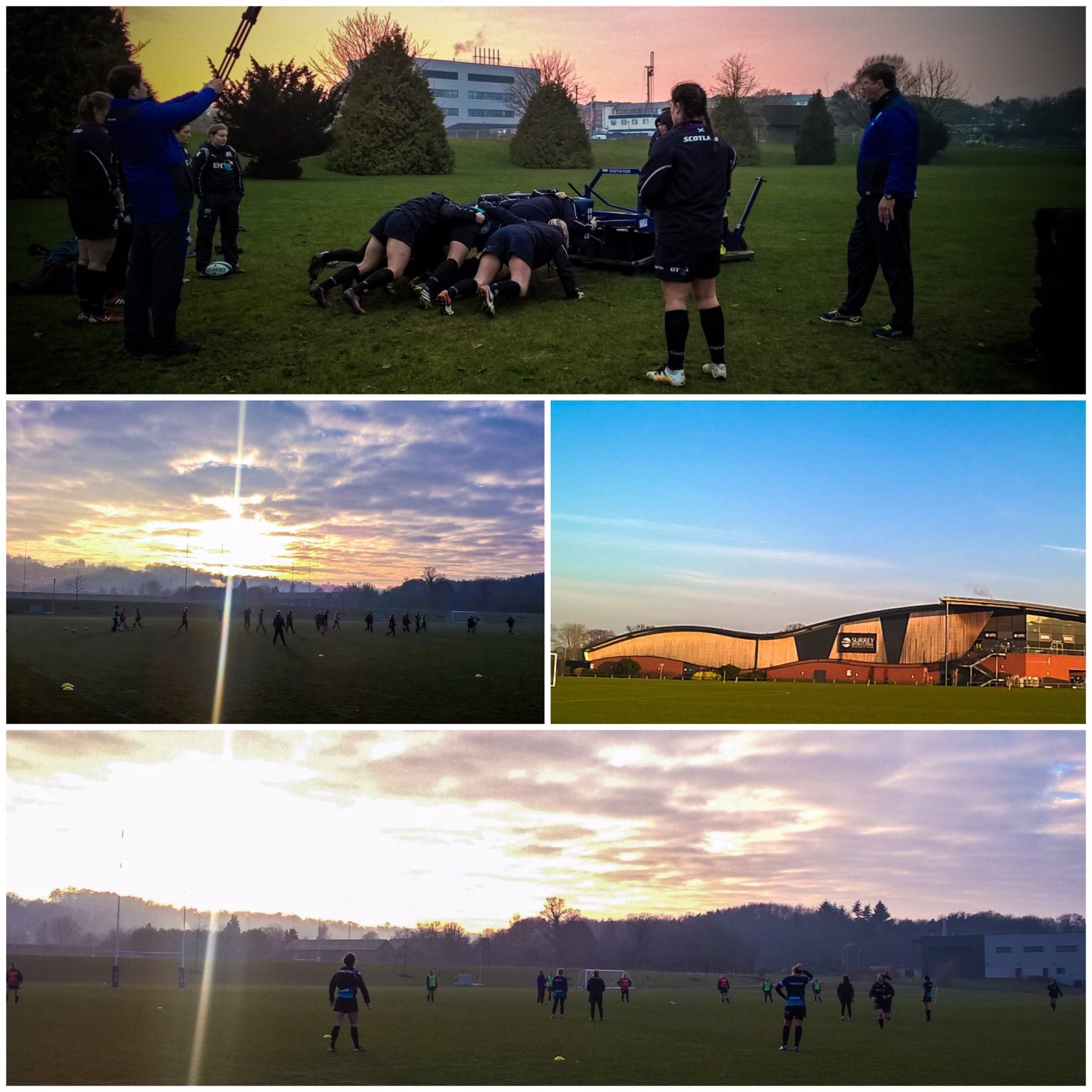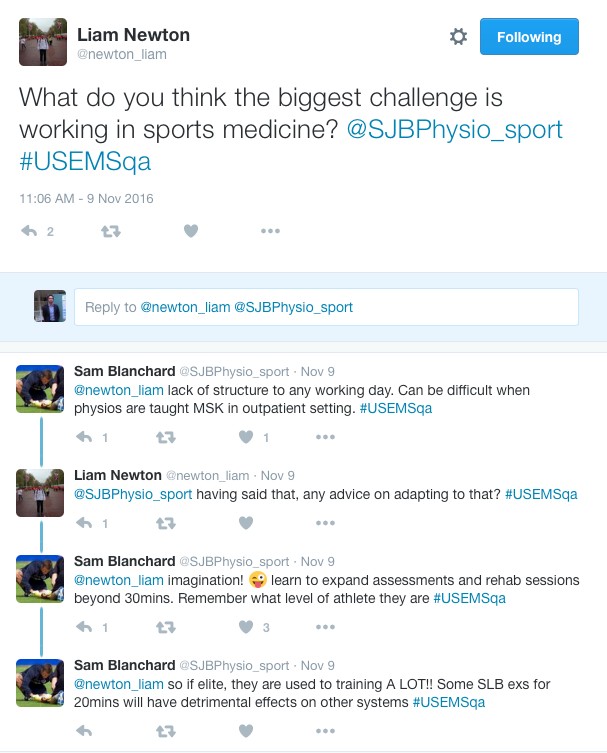Undergraduate perspective on Sport & Exercise Medicine
By Sam Blanchard, Liam Newton, and Jonathan Shurlock

Undergraduate Sports and Exercise Medicine Society (USEMS) recently hosted an online Q&A session, via Twitter with Sam Blanchard (@SJBPhysio_sport) – Academy Clinical Lead & International Women’s Lead Physiotherapist for Scottish Rugby Union (SRU). For those who missed it we’ve highlighted the key interactions, and some of our personal insight into working in elite sport. We’ve taken some of Sam’s answers directly from his replies to some of the questions he received throughout the Q&A evening.
Q: How did you make your first steps into professional sport?
SB: “Putting in the hours. Continuously wanting to learn, being open to criticism, reflecting and reacting. A key moment (of realisation) was lone working and feeling out of my depth. So I looked for supported opportunities.”
The idea of working in a supportive environment is essential for safe practice and your ability to learn from your experience. As a student or new graduate working full-time within a professional sports medicine team can be difficult to achieve, however semi-professional sport often provides a great stepping stone. As Sam mentioned, it’s important to seek out a club that has qualified staff to work under to help develop your clinical decision making and ensure your work tasks are suited to your current scope of practice.
Sam and the SRU recently advertised for 2 Junior positions to address this very issue and offer a structured development plan for those wanting to make the step into elite sport. First Aid/trauma course certification and basic insight into sports tapping and massage are essential. Having these extra skills will make you more valuable to a club. When contacting them it’s important to highlight what YOU can offer them!
Sam highlighted the importance of not working from an isolated and vulnerable position, in his answer to a later question:

Q: What do you think are the most important practical skills to learn in order to be a successful practitioner?
SB: “regardless of method, clinical reasoning underpins everything. Continually ask “why” to yourself and colleagues. Clinical reasoning for exercise rehabilitation provides you with tools not ‘answers’.”
Regardless of your experience, expose yourself to different practitioners and schools of thought. It’s important to find ways of thinking that suit you and your personality, to back this up, where possible, with evidence based research and slowly become your own clinician. Organise continuous professional development (CPD) visits to different organisations and even different sports, as medical care very often transposes athletic demands.

Q: How often does your advice conflict with that from the medic? How do you deal with that?
SB: “In my experience, very rare! Understanding of roles & level of knowledge crucial. Recognise your own limitations & others’ strengths.”
Q: How would you recommend medical students learn about the basic principles of rehabilitation?
SB: “Try the exercises before prescribing. And be prepared to steal ideas from Twitter…”
Sam has written a really interesting piece on exercise rehabilitation, which can be found here. Improving your rehabilitation skills takes time and is as much an art as a science. Thus it is important to try out ideas, reflect on what has or hasn’t worked and learn from that. Setting an identity or purpose to a rehabilitation session ensures meeting the correct physiological adaptations. There is a great paper here on bridging the gap between training and rehabilitation, here on how to apply the principles of strength and conditioning into rehabilitation as well as how optimal loading can be used in the rehabilitation process.
Q: What qualities do you look for when interviewing/shortlisting a young Physio?
SB: “awareness of own limitations, humility, social skills, work ethic… and tea making ability”
Q: What do you think about increased ACL/knee damage post ankle injury?
SB: “GRF’s feed up so loss of range or proprioception or ability to decelerate would make sense for increased risk.”
Although it’s from a few years back, there’s a great literature review on this topic, which highlights some of the clear evidence for an increased risk of re-injury, particularly with inadequate rehabilitation. You can find that review here.
Q: Any courses or conferences you’d recommend to students or new grads?
SB: “Don’t just stick to your own professional courses. Explore S&C/sports science/coaching”.
Although a light-hearted tweet to finish on, extracurricular courses and CPD are a really important consideration throughout your training and post-graduation. And they often come with a hefty price tag. There are a number of student discounts available to courses such as Isokinetic Football Medicine Conference as well as through BASEM and our very own USEMS student conference – so look out for these. As rich an education resource these courses may be, it is important that you are working with a patient population that allows you to apply the newly acquired knowledge, making the money spent, a wise investment.
***********
Sam Blanchard is Academy Clinical Lead & International Womens Lead Physiotherapist for Scottish Rugby Union. You can find him on twitter @SJBPhysio_sport
Liam Newton works as a musculoskeletal physiotherapist in the NHS as well as AFC Bournemouth Academy. You can find him on twitter @newton_liam
Jonathan Shurlock is an academic foundation year 1 doctor based in Sheffield. He coordinates the BJSM Undergraduate Perspective blog series. Please send your blog feedback and ideas to: jhshurlock@gmail.com ; or Tweet @J_Shurlock